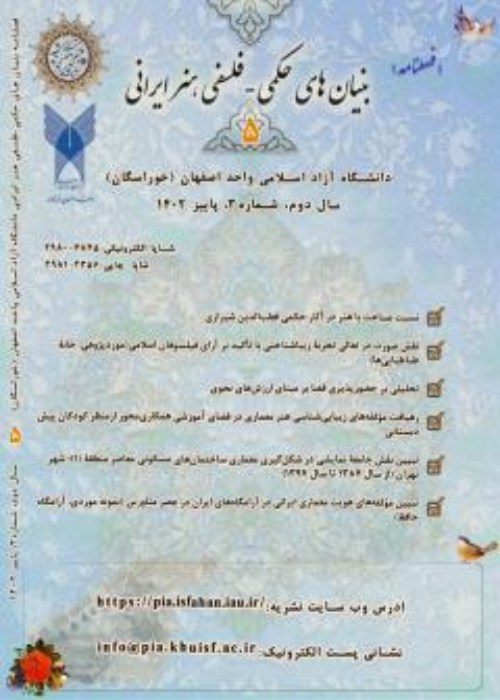A comparative study of the wall paintings of Imamzadehs and churches in Isfahan.
After moving Armenians to Isfahan, Shah Abbas I ordered to build churches for them so that they would adhere to the urban life in Isfahan. These churches, which were initially formed with the help of Iranian architects, had an Iranian taste. Most of the researchers who have written about the churches of Isfahan's New Jolfa have relied on the fact that the architecture of Isfahan's churches is Iranian. The main goal of this article is to compare the paintings of Imamzadehs and churches in Isfahan, remained from late Qajar era, in terms of theme, structure, image and relationship with the environment. The research question is “what effect did the painting of churches have on the wall paintings of Imamzadehs in the late Qajar era?” This study is library and field-based to collect the data, descriptive-analytical and comparative in terms of methodology. It attempts to find the similarities and differences of the tone and shape of the wall paintings of the churches and imamzadehs of Isfahan as one of the manifestations of sacred art in terms of concept and expression according to the characteristics related to their roles. The findings of the research show that the subject of Imamzadeh's paintings are pictorial narratives of the favorite themes of Iranian Shia people. The blessed images of the Prophet Muhammad, the Imams, the visual narration of the Ashura incident, are all clear examples of the interests and beliefs of every Muslim who enters a place like Imamzadeh. The subject of the paintings on the walls of the New Jolfa churches in Isfahan is generally the sufferings of Christ and his relatives and other religious traditions mixed with people's beliefs. In the imamzadehs of Isfahan, the religious stories and sufferings of the imams have been depicted mixed with folk beliefs, and the composition, colors and icons have been influenced by the churches. The execution of painting and the work materials of the painters have been almost common in both. Despite the similarities, the painting of churches has been a state art in a sense, but none of the creators of imamzadeh wall paintings were related to the ruling class, and this issue is very influential in the execution and richness of the work.
Wall painting , Imamzadeh , Isfahan , Church , Jolfa No
- حق عضویت دریافتی صرف حمایت از نشریات عضو و نگهداری، تکمیل و توسعه مگیران میشود.
- پرداخت حق اشتراک و دانلود مقالات اجازه بازنشر آن در سایر رسانههای چاپی و دیجیتال را به کاربر نمیدهد.



